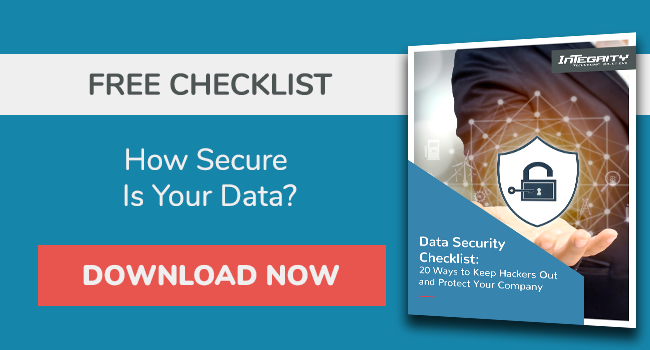Old School Tech Security: 7 Ways to Protect Your Sensitive Data

Start digging around about how to protect your data, and you’ll be soon drowning in a mix of apps, websites, and vocabulary terms that are difficult to understand.
Instead, simplify the process.
Here is a list of seven ways to safeguard your data.
1. Make A Security Plan
Involve only simple word processing technology for this. Create a plan for how you plan to protect your sensitive data. This could be for you as an individual (depending on your role) or for your business. One aspect the plan should cover is disaster recovery.
2. Educate Employees
Once you make the plan, educate your employees about it. Circulate the plan to everyone by making it accessible as an internal wiki site, reviewing it in an all-company meeting, or providing handouts. Security awareness is critical.
3. Limit Who Can Access Sensitive Data
In your plan, you should have created a list of what sensitive you have and where it’s located. Go one step further and identify who has access to that data.
Shred-It’s 2018 survey found that employee negligence is a top data breach concern in the U.S. In fact, half of C-suites said human error or accidental loss by an insider caused a data breach.
4. Ensure Sensitive Data Is Under Lock and Key
Now that you have a list, stick to it. These should be the only people who have access to this data.
You may consider locking down certain laptops, desktop computers, and even thumb drives containing critical information.
5. Keep Your Devices Locked
Don’t leave unattended laptops open at libraries, airports, coffee shops, or wherever you do your work. If you do, change your settings so that if your computer is asleep for a short period (say, one minute), you’ll need to use your password to get back in.
Similarly, use a passcode for your smart device.
No matter your device, a predator will be locked out if enough time has passed.
6. Use Strong Passwords
If you want security, you need strong passwords. Don’t use a notebook or sticky notes kept next to your computer. Also, stay away from children’s names, maiden names, significant numbers, and anything else that can be easily guessed by someone trying to access your accounts and information.
Instead, use a password manager to generate and store random passwords. Then, you’ll need to only memorize your master password (or use your fingerprint) for that password manager to access all of your individualized passwords.
7. Create Backups
Finally, make sure your sensitive data is backed up.
Many systems exist that can back up your employees’ computers to a cloud service on a regular basis, automating much of the work for you. Take advantage of these tools to make sure that if that laptop is lost or stolen, it can be recovered at a later point in time.
You need some technology infrastructure in place to protect your data, but you don’t need to go overboard. Use these simple tips when assessing your security strategy to help keep your data in your hands only.

